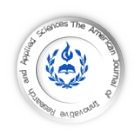
GENERAL INFORMATION

American Journal of Innovative Research & Applied Sciences

| ISSN: 2429-5396 (e) | www.american-jiras.com | |
| Web Site Form: v 0.1.05 | JF 22 Cours, Wellington le Clairval, Lillebonne | France |
| Web Site Form: v 0.1.05 | JF 22 Cours, Wellington le Clairval, Lillebonne | France |


ResearchBib, Google Scholar, SIS database, i.f.s.i.j, Scribd, IISJ, Eurasian Scientific Journal Index (ESJI), Indianscience.in, arastirmax, Directory of Research Journals Indexing, Pak Academic Sesearch, AcademicKeays, CiteSeerX, UDL Library, CAS Abstracts, J-Gate, WorldCat, Scirus, IET Inspec Direct, and getCited
Indexed by:
| HOME || ABOUT US || ARCHIVES || AIMS AND SCOP || AUTHORS || REVIEW|| SUBMIT MANUSCRIPT || EDITORIAL BOARD || CONTACT US |
| HOME | ABOUT US | ARCHIVE | AIMS AND SCOP | AUTHORS | REVIEW | SUMIBMIT MANUSCRIPT | EDITORIAL BOARED | PUBLICATION FEE |
| | ARTICLES | Am. J. innov. res. appl. sci. Volume 8, Issue 6, Pages 238-245 (June 2019) |
| Research Article |
American Journal of innovative
Research & Applied Sciences
Research & Applied Sciences
ISSN 2429-5396 (Online)
OCLC Number: 920041286
OCLC Number: 920041286

| JUNE 8 | N° 6 | 2019 |
RESUME
Introduction : Les rivières de la ville de Lubumbashi sont caractérisées par une absence de traitement qui sont à la base des maladies d’origine hydrique à répétition et qui
devient un problème de santé publique. Objectifs : L’ objectif de notre étude était, d’une part, d’isoler les microorganismes dans l’environnement aquatique et, d’autres part,
de déterminer la variation du pH, de l’oxygène dissous et de la température pendant la saison de pluies et pendant la saison sèche, afin d’évaluer l’impact de leur variation
sur l’écologie microbienne du milieu aquatique. Méthodes : Nous avons effectué le prélèvement entre 12h00 à 13h00 pendant la saison de pluies de 2017 et la saison sèche
de 2018. Pour chaque échantillon d’eau, nous avons pris la température, dosé l’oxygène dissous, mesuré le pH, puis nous avons procédé à l’ensemencement de l’eau sur des
milieux de cultures et finalement à l’identification des microorganismes. Les échantillons d’eau ont été prélevés dans 12 rivières. Résultats : Les valeurs moyennes de la
température, du pH et de l’oxygène dissous obtenus pendant la saison sèche ont été respectivement de 21,75 °C, 7,58 et 7,45 mg/dl. Pendant la saison de pluies ces
valeurs moyennes ont été respectivement de 25,58°C, 7,29 et 5,92 mg/dl. Pour l’analyse microbiologique, Aeromonas Hydrophila et les Coliformes totaux ont été identifiés
dans toutes les rivières de la ville de Lubumbashi pendant la saison sèche et la saison de pluies .Certes, il y a de particularités dans certaines rivières où nous avons identifié
différentes bactéries comme Klebseilla planticola, Escherichia coli, Enterococcus faecalis. Cette diversité des microorganismes et changement de facteurs physicochimique
sont dus au changement de saisons. Conclusion :L’absence d’un système adéquat du traitement des eaux usées de rivières de la ville de Lubumbashi, la présence des
déchets provenant de l’activité humaine, minière et le débordement d’égouts qui peuvent survenir en aval des rivières lors des pluies constituent une source potentielle
du mélange des micro-organismes, des éléments nutritifs et de facteurs physicochimique. La mairie de la ville de Lubumbashi doit trouver une solution mixte d’encadrement
entre les miniers, les industriels et la population sur l’élimination de déchets.
Mots clés : Lubumbashi, eaux usées, microorganismes, oxygène dissous, température.
ABSTRACT
Background: The Rivers of the city of Lubumbashi are characterized by an absence of treatment that is to the basis of the illnesses of water origin to
repetition and that becomes a problem of public health. Objectives: The objective of our survey was, on the one hand, to isolate the microorganismes in
the aquatic environment and, of other part, to determine the variation of the pH, of the dissolved oxygen and of the temperature during the season of rains
and during the dry season, in order to value the impact of their variation on the microbial ecology of the aquatic environment. Methods: We did the
withdrawal between 12h00 to 13h00 during the season of rains of 2017 and the dry season of 2018. For every sample of water, we took the temperature,
measured out the dissolved oxygen, measured the pH, then we conducted the sowing of water on surroundings of cultures and finally to the identification of
the microorganismes. The samples of water have been appropriated in 12 rivers. Results: The middle values the temperature, the pH and the oxygen
dissolved gotten during the dry season were respectively of 21.75 °C, 7.58 and 7,45 mg/dl. During the season of rains these middle values were respectively
of 25.58°C, 7.29 and 5.92 mg/dl. For the microbiological analysis, Aeromonas Hydrophilas and the total Coliformeses have been identified in all rivers of the
city of Lubumbashi during the dry season and the season of rains. Certainly, there are particularities in some rivers where we identified different bacteria as
Klebseilla planticola, Escherichia coli, and Enterococcus faecalis. This diversity of the microorganisms and change of factors physicochimique are due to the
change of seasons. Conclusion: The absence of an adequate system of the treatment of waters used of rivers of the city of Lubumbashi, the presence of
the garbage coming from the human, mining activity and the overflow of sewers that can occur downstream the rivers at the time of rains constitutes a
potential source of the mixture of the micro-organisms, the nourishing elements and factors physicochimique. The town hall of the city of Lubumbashi must
find a mixed solution of framing between the mining, the industrial and the population on the elimination of garbage.
Key words: Lubumbashi, worn-out waters, microorganisms, dissolved oxygen, temperature.
|

Authors Contact.
*Correspondant author and authors Copyright © 2019:
| Patrick Banza 1* | Eric Kasamba 2 | Jean Katshiwa 3 | et | Victor Ndibualonji 4 |
Affiliation.
1. Institut supérieur des Techniques Médicales de Lubumbashi | Département de Laboratoire | unité de Bactériologie | Lubumbashi | R.D.Congo |
2. Université de Lubumbashi | Faculté de médecine Humaine | Département de Science Biomédicale | unité de bactériologie | Lubumbashi | R.D. Congo |
3. Université de Likasi | Faculté polytechnique| Likasi | R.D. Congo |
4. Université de Lubumbashi | Faculté de médecine vétérinaire | Département de science Biomédicale | unité de Biochimie| Lubumbashi R.D. Congo |
This article is made freely available as part of this journal's Open Access: ID | Patrick-ManuscriptRef.3-ajira130519 |
CARACTERISATION DE L’ECOLOGIE MICROBIENNE DU MILIEU AQUATIQUE : EFFET SAISON
CHARACTERIZATION OF MICROBIAL ECOLOGY OF THE AQUATIC ENVIRONMENT: EFFECT SEASON
| Patrick Banza 1 | Eric Kasamba 2 | Jean Katshiwa 3 | et | Victor Ndibualonji 4 |. Am. J. innov. res. appl. sci. 2019; 8(6):238-245.
| PDF FULL TEXT | | XML FILE | | Received | 13 April 2019 | | Accepted | 19 May 2019 | | Published | 04 June 2019 |
CHARACTERIZATION OF MICROBIAL ECOLOGY OF THE AQUATIC ENVIRONMENT: EFFECT SEASON
| Patrick Banza 1 | Eric Kasamba 2 | Jean Katshiwa 3 | et | Victor Ndibualonji 4 |. Am. J. innov. res. appl. sci. 2019; 8(6):238-245.
| PDF FULL TEXT | | XML FILE | | Received | 13 April 2019 | | Accepted | 19 May 2019 | | Published | 04 June 2019 |